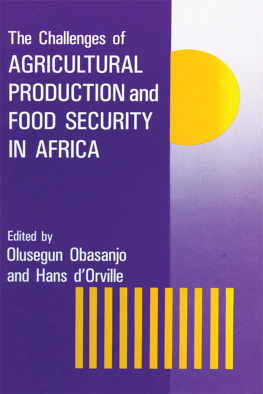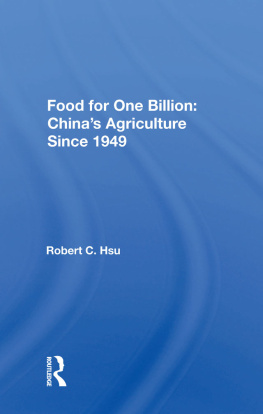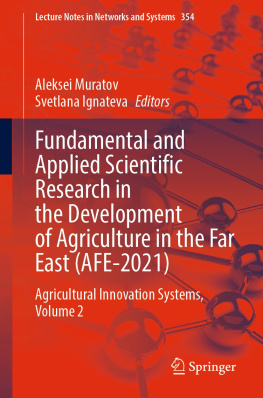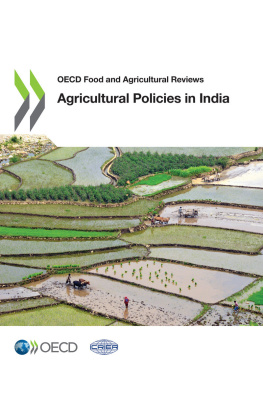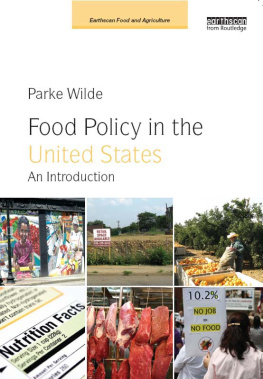First published by Taylor & Francis Ltd
This edition published 2012 by Routledge
| Routledge | Routledge |
| Taylor & Francis Group | Taylor & Francis Group |
| 711 Third Avenue | 2 Park Square, Milton Park |
| New York, NY 10017 | Abingdon, Oxon 0X14 4RN |
THE CHALLENGES OF AGRICULTURAL PRODUCTION AND FOOD SECURITY IN AFRICA
Copyright 1992 by Taylor & Francis New York, Inc. All rights reserved. Except as permitted under the United States Copyright Act of 1976, no part of this publication may be reproduced, distributed in any form or by any means, or stored in a database or retrieval system, without the prior written permission of the publisher.
This book was set in Times Roman by Hemisphere Publishing Corporation. The editors were Radhika Rao Gupta, Heather Jefferson, and Carolyn V. Ormes; the production supervisor was Peggy M. Rote; and the typesetter was Laurie Strickland. Cover design by Michelle Fleitz.
A CIP catalog record for this book is available from the British Library.
Library of Congress Cataloging in Publication Data
The challenges of agricultural production and food security in Africa / edited by Olusegun Obasanjo and Hans dOrville.
p. cm.
Derived from the papers submitted, and the presentations made, at a conference convened by the Africa Leadership Forum in Ota, Ogun State, Nigeria in July 1989.
Includes bibliographical references and index.
1. Agricultural productivityAfricaCongresses. 2. Food supplyAfricaCongresses. I. Obasanjo, Olusegun. II. Orville, Hans d, date. III. Africa Leadership Forum.
| HD2117.C47 1992 |
| 338.1 96dc20 | 91-46540 |
| ISBN 0-8448-1724-4 | CIP |
The challenges of seriously confronting agricultural production and food security in Africa have become of strategic importance and urgency in the successful socioeconomic development and transformation of the African economies. Much remains to be done to create the incentives and structural context in which African agriculture can be truly modernized and its productivity enhanced. The ultimate objective must be to increase food productivity and food self-sufficiency with a view to turning Africa into a food exporter.
The agricultural and rural crisis besetting Africa today is the result of both policy failures and structural rigidities that inhibit access to and control of vital resources. The challenge of leadership in the agricultural sector in Africa is how to design and implement policies that will help induce growth and development in the sector.
It is against this background that the Africa Leadership Forum, in July 1989, convened a major conference to explore a range of parameters to be addressed in the formulation of successful policies. This volume is derived from the papers submitted and the presentations made at the conference, which was held in Ota, Ogun State, Nigeria.
In the Appendix to this book, the reader will find the main conclusions and recommendations that emerged from the conference, which have since been widely distributed among decision-makers in Africa and among concerned international organizations. Proceeding from an analysis of what went wrong in the past, the conclusions highlight a series of actions that must be taken in a number of areas, including women in agriculture, small-scale farmers, agribusiness, subsidies, human capital, linkages between international and national research, and energy. The substantive contributions from which these conclusions were derived served as the basis for this text.
In the Introduction, Olusegun Obasanjo, Chairman of the Africa Leadership Forum, reviews in a tour dhorizon the manifold problems and shortcomings of African agriculture and suggests a number of measures that might be taken to alleviate present problems.
The well-known Indian scientist M. S. Swaminathan examines in detail the present situation and discusses the nature of challenges, including social factors, economic factors, energy, employment, ecology, and social engineering. He subsequently elaborates several strategies corresponding to the various ecological zones of Africa. One key aspect of this chapter focuses on water as a key determinant of the agricultural future. Likewise, he discusses the interrelationship between ecological and food security and biotechnology and argues that strategies should be oriented to specific target groups, e.g., sustainable development systems for small farmers or women. Swaminathan concludes with an outline of new frontiers and an agenda for action.
This overview chapter is supplemented by a detailed study of Africas food security situation by the Secretariat of the United Nations Economic Commission for Africa (ECA). The ECA study develops the concept of food security and offers an assessment of the current food security situation in all African countries. From there, it develops the resource management challenges for sustainable food production in Africa and finally raises the issue of food accessibility.
A contribution by Idris Nur, of the Secretariat of the Organization for African Unity, deals with dietary patterns in Africa. Knowledge of these patterns is of crucial importance in determining the provision of adequate food to the population in the various countries and ecological zones.
After these more general chapters, another series of chapters discusses specific aspects of the agricultural practices and problems in Africa. Thomas R. Odhiambo of Kenya, Director of the International Centre of Insect Physiology and Ecology (ICIPE) and Chairman of the African Academy of Science, analyzes from a scientific viewpoint the problems and prospects of the practice of agriculture in Africa. This chapter discusses in detail pest-management innovations and especially the adoption of an integrated pest-management system in tropical Africa as a critical means to help ensure, year after year, the harvest of a reasonable yield of a farmers crop.
This is followed by chapters dealing specific aspects of the practice of agriculture in Africa. Mark Chona of Zambia and the National Farmers Association of Zimbabwe expound on the farmers viewpoint and his or her problems. Mary Okelo of Kenya discusses the role and problems of women in the agricultural context.
George Moody-Stuart, an executive with Booker plc. of the United Kingdom, shares his vast experience in agribusiness, i.e., the agriculture organized on a large scale. Proceeding from the question of whether Africa needs agribusiness, he specifies what agribusiness needs from government and what governments, in turn, can get from agribusiness. Pierre-Victor Mpoyo, an African entrepreneur, then outlines his perception of the needs of African agriculture.
After this detailed focus, the next chapters deal with international organizations active in the agricultural field and their respective policies and approaches. Ketema Yifru of Ethiopia describes the perspective of the World Food Program (WFP); Leopold Wantisse Siry of Burkina Faso discusses the overall approach of the Food and Agricultural Organization of the United Nations (FAO) in formulating national food security programs; and Eugene R. Terry of Sierra Leone outlines the role and strategy of the West Africa Rice Development Association (WARDA), a regional organization engaged in the formulation of a strategy for rice research.

